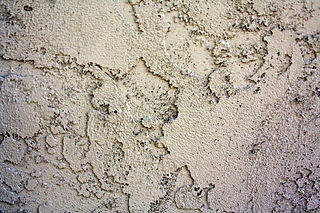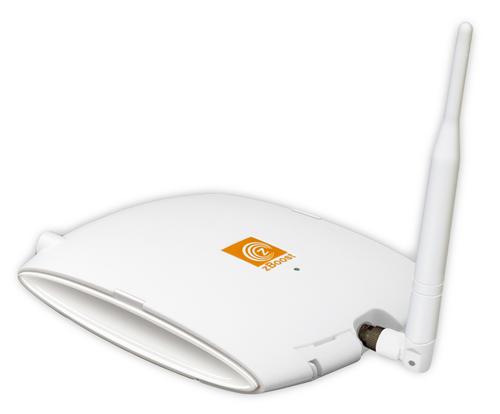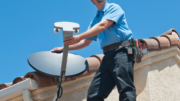When working at home, cell reception can be a real challenge. So many of us would give up a costly land line if only we knew that we wouldn’t miss an important call from the office. As I sit here writing this, my cell phone sits by the window, where I know the reception is good enough to guarantee I’ll get a call.
Why is this? If I set foot outside my house, my reception is great! Yet, on the other side of a wall that’s mostly air with some drywall and stucco, I’m down to one bar. I did some research and the answer is a Faraday Cage.

A Faraday cage is a box that is very good at shielding what’s inside it from electricity. It was actually Benjamin Franklin who discovered that if you put something inside a mesh box, it’s just as safe from electricity — safer actually — than if you put it in a solid metal box. The mesh box is lighter, cheaper and easier to make than the solid box.
Faraday cages are used to protect people from large electrical generators, and the braided wire on the outer part of a coaxial cable is a Faraday cage, too. Faraday cages work really well on the inside of computers, where they let air in and keep interference out.

The problem is… my house is covered in stucco. Stucco is put on a house by covering the house in a big wire mesh and then slathering the stucco on top. The wire mesh… is a Faraday cage, too.
In fact, in an unfortunate coincidence, the wire mesh used in my house (and a lot of other homes made around the same time) is a perfect Faraday cage. You almost couldn’t have designed it better. The space between the wires in a Faraday cage dictates the kind of transmissions that can make it into the house. This stucco mesh just happens to filter out the exact radio waves my cell phone needs. Frustrating!
Luckily Solid Signal was able to help me with the Wi-Ex ZBoost YX545 Wireless Extender. My friends at Solid Signal tell me that this is just what I need.
If you have great signal outside and poor signal inside, this little box is just the ticket. That’s what they say. So, I decided to put it to the test.
The YX545 came in a retail package promising great things. Wi-Ex is a well-known company in cell repeaters and I was ready to be wowed. I wasn’t disappointed at all.
The YX545 comes with a base unit with its own antenna and power adapter, plus a length of coaxial cable, two-piece antenna, and all the mounting hardware I think I’ll need. Everything was cleanly packaged and there is an installation guide and a sheet giving me the number of their tech support if I get stuck. It seems really well put together.
The base unit itself is about the size of a small wireless router. It does not seem to be set up for wall mounting, because there are no keyhole slots on the back. Also for aesthetic purposes it looks like if you mount it on the wall with the transmitting antenna side up, the company decal would be upside down. So, onto the desk it will go.
Wi-Ex recommends placing the antenna 15 vertical feet above the base unit for best results, and mounting the receiving antenna outside. In the next installment of this series, I’m going to see how much improvement I can get just by installing the whole thing inside. If I don’t have to drill, I won’t.
Follow along for the next 30 days as I test the YX545 and determine if it’s a good value.





